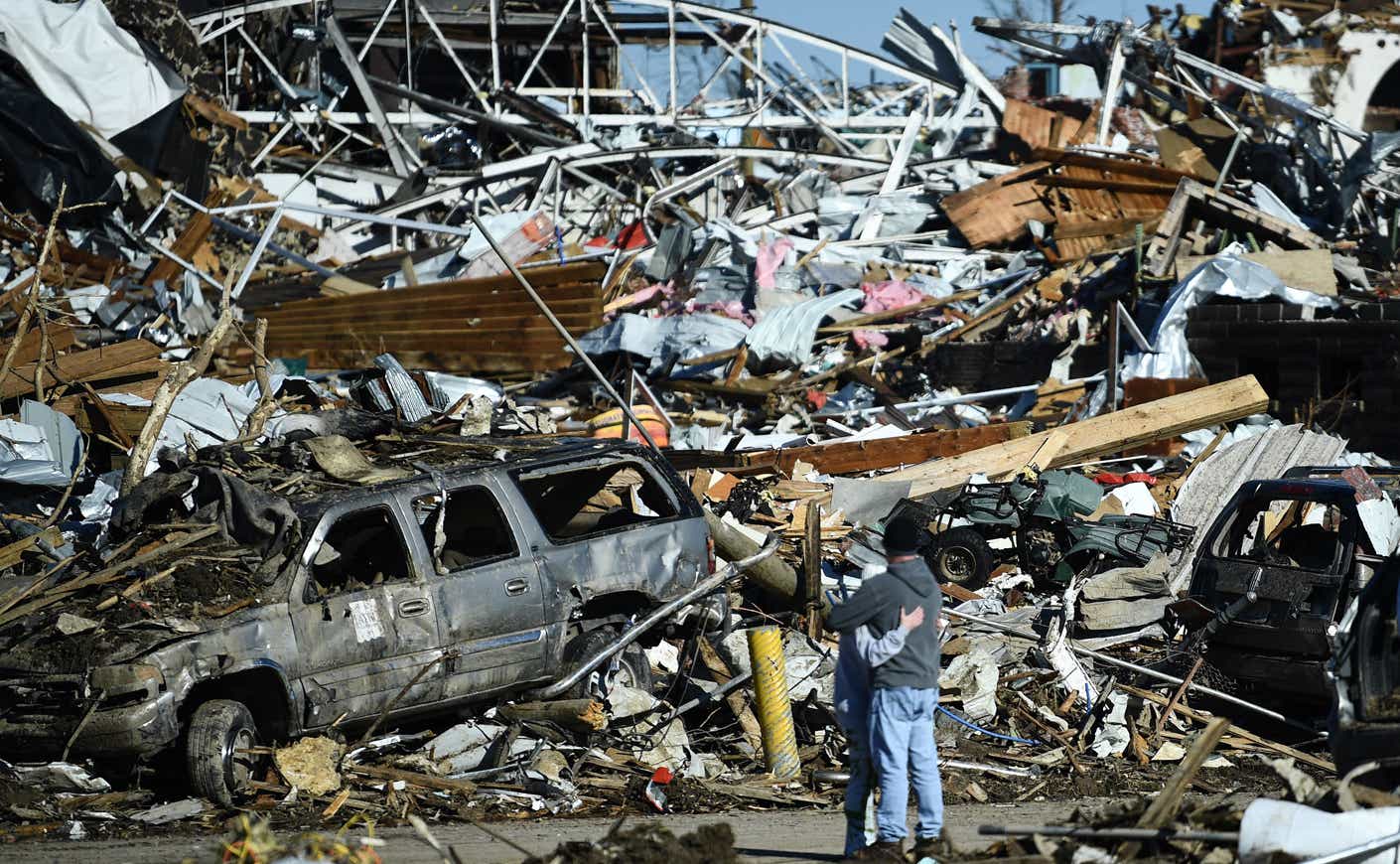The death toll from a series of tornadoes that tore through six states continues to rise. Here’s a look at the aftermath and the latest on rescue efforts:
Where did the storms strike?
At least 50 tornadoes ripped through Arkansas, Illinois, Kentucky, Mississippi, Missouri, and Tennessee on Friday night — killing at least 90 people. Ohio and Indiana were affected as well. The death toll is expected to rise, as officials pick through the ruins.
“It’s devastation like none of us have ever seen before,” Kentucky Gov. Andy Beshear said.
President Biden, who approved an emergency declaration in Kentucky, said the storm is “likely to be one of the largest tornado outbreaks in our history.”
Despite so much warning
Forecasts were accurate and warnings came in good time, yet Friday night’s tornado outbreak was December’s deadliest on record. It begs the question: why?
In the past, establishing such answers has proven a complicated and lengthy task. In this instance, initial evidence suggests that the timing of the tornadoes in the dead of night, their exceptional intensity, and population density were all key factors — which couldn’t be mitigated by cautions.
“When you have a violent, long-tracked tornado traveling at highway speeds overnight, in December … it’s quite literally a recipe for disaster,” wrote Stephen Strader, an assistant professor and director of the geography program at Villanova University, in an email to The Washington Post. “It overwhelms the systems we put in place to protect people.”
Scenes from ‘ground zero’
Kentucky was the hardest hit: Beshear said entire towns were flattened and that emergency responders were going door-to-door, searching for survivors — although in some cases, “there aren’t doors.” In the small town of Dawson Springs, about 75% of the community was wiped out and replaced by “chaos,” Mayor Chris Smiley said Sunday.
Employees at the Mayfield candle factory in Kentucky were reportedly told that if they left before the tornado hit, they’d risk losing their jobs. At least 8 people died. The statewide death toll stands at 74 as of December 14, with 100 people still unaccounted for.
Beshear said the death toll in his state may exceed 100 people, as rescue efforts continue. Authorities said over the weekend that they feared dozens of employees had been killed while working the night shift at a candle factory in Mayfield, Kentucky, a town of 10,000 in the state’s southwest. Beshear said that an estimated 110 people were inside the factory when it crumbled, and that only 40 had been rescued. But on Sunday, a spokesperson for the company said eight workers had been confirmed dead and eight were still unaccounted for.
“We all just rocked back and forth, and then boom, everything fell on us,” Kyanna Parsons-Perez, who was on the factory floor, told CNN.
She was pinned underneath a water fountain, and as her co-workers cried for help, she began streaming on Facebook Live: “Y’all. Pray for us. Try and get somebody to help us,” she said. Parsons-Perez was eventually rescued, pulled out from under 5 feet of debris.
A Mayfield town official said over the weekend that rescuers were still “in the trenches, trying to find people.”
“We need your prayers,” he said. “We need your help.”
In Illinois, at least six people were killed at an Amazon warehouse, which was ripped apart by a powerful tornado. “It sounded like a train coming through the building. The ceiling tiles came flying down,” one employee said.
How common are December tornadoes?
Winter twisters aren’t uncommon. But meteorologists say the intensity of this outbreak is nearly unheard of. The storm carved a 250-mile path, unleashing winds of up to 205 mph — and sending debris nearly 30,000 feet in the air. (One woman in Indiana claims she found an old photo belonging to a family in Kentucky, over 100 miles away.)
That would place the outbreak in the EF4 or EF5 tier, a 0-to-5 scale ranking tornado intensity, per the Washington Post. There have only been two other EF5 December storms.
Experts say the unseasonably warm, moist air combined with a La Niña weather pattern gave rise to these deadly twisters — one of which may break a 100-year-old record for the longest path of destruction. But it’s hard to pin down exactly how climate change is affecting the frequency of tornadoes.









